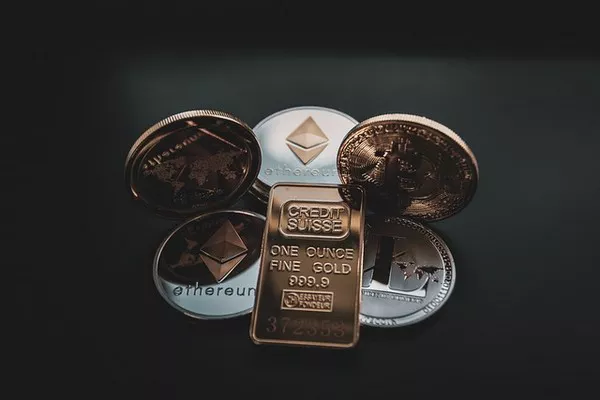Investing in precious metals, particularly silver, has long been a strategy for diversifying portfolios and hedging against economic uncertainties. When purchasing silver, understanding the concept of “spot price” and the premiums associated with it is crucial. Spot price refers to the current market price of silver per ounce, typically influenced by global supply and demand dynamics. However, the price you pay as a buyer often exceeds this spot price due to various factors, collectively known as premiums.
What is Spot Price?
Before delving into premiums, it’s essential to grasp the concept of spot price. The spot price of silver is the cost at which silver can be bought or sold for immediate delivery. This price is quoted on commodities exchanges such as the London Bullion Market Association (LBMA) and the Chicago Mercantile Exchange (CME).
Factors Influencing Premiums
Premiums represent the additional cost above the spot price that buyers pay when purchasing silver. These premiums can vary widely based on several factors:
Product Type: Different forms of silver (bullion coins, bars, rounds) carry varying premiums. Generally, government-minted coins like American Silver Eagles or Canadian Maple Leafs tend to have higher premiums due to their recognized purity and quality assurance.
Purity and Weight: Higher purity silver, such as .999 fine silver, often commands higher premiums. Additionally, heavier silver bars or coins may have lower premiums per ounce compared to lighter counterparts.
Market Conditions: Supply and demand dynamics in the physical silver market influence premiums. During periods of high demand or limited supply, premiums can increase. Conversely, when supply is abundant and demand is low, premiums may decrease.
Dealer Markup: Dealers typically add a markup to cover their costs and profit margin. This markup can vary significantly between dealers based on their business model, reputation, and overhead costs.
Availability and Scarcity: Limited edition or collector’s items may carry higher premiums due to their rarity and desirability among collectors.
Understanding Premium Types
Premiums on silver can be categorized into several types, each reflecting different aspects of the market:
Production Premium: The cost associated with refining, minting, and distributing the silver product.
Supply and Demand Premium: Fluctuations in demand relative to supply influence premiums. High demand or limited availability can drive premiums up.
Numismatic Premium: Coins or bars with historical or collector value may carry premiums above and beyond their intrinsic metal value.
How Much Should You Pay Over Spot?
Determining how much to pay over spot requires balancing several considerations:
Current Market Conditions: Monitor the spot price and compare it with historical data to gauge whether premiums are unusually high or low.
Purpose of Purchase: Are you buying silver as an investment or as a collector? Numismatic premiums may be justified if you value the historical or collector appeal of certain pieces.
Dealer Reputation: Research dealers thoroughly. Established dealers with a good reputation may charge higher premiums, but they often provide greater reliability and customer service.
Bulk Purchases vs. Small Quantities: Buying larger quantities of silver often reduces the premium per ounce compared to purchasing smaller quantities.
Evaluating Premiums: Case Studies
Let’s explore a few scenarios to illustrate how premiums can impact your purchasing decisions:
Case Study 1: American Silver Eagle vs. Generic Silver Rounds
American Silver Eagle: A popular choice among investors and collectors, typically sells with a premium ranging from 5% to 20% over spot, depending on market conditions and dealer.
Generic Silver Rounds: These are privately minted rounds with no government backing. They generally have lower premiums compared to sovereign coins, ranging from 3% to 10% over spot.
Case Study 2: 100-ounce Silver Bars vs. 1-ounce Silver Bars
100-ounce Silver Bar: Due to economies of scale and lower production costs per ounce, these bars often carry lower premiums, around 3% to 5% over spot.
1-ounce Silver Bar: Smaller bars are convenient for smaller investors but may carry higher premiums, typically ranging from 5% to 8% over spot due to higher production costs per ounce.
Strategies for Managing Premiums
To optimize your silver investment strategy, consider the following strategies:
Buy During Market Dips: When the spot price is low, premiums tend to be more stable or lower. This can be an opportune time to purchase silver at a favorable overall price.
Diversify Purchases: Spread your purchases across different types of silver products (coins, bars, rounds) to balance premiums and liquidity.
Monitor Market Trends: Stay informed about market conditions, geopolitical events, and economic indicators that could impact silver prices and premiums.
Consider Storage Costs: Factor in the cost of secure storage if you plan to hold physical silver for the long term. This cost should be weighed against potential savings from lower premiums on larger purchases.
See Also A Guide to Selling Silver at Spot Price
Conclusion
Investing in silver involves understanding both the spot price of the metal and the premiums you’ll pay above that price. While premiums can vary based on product type, market conditions, and dealer markup, they are a necessary consideration when determining the total cost of your investment. By staying informed, evaluating your purchasing goals, and strategically managing premiums, you can make informed decisions that align with your financial objectives. Whether you’re a seasoned investor or new to the precious metals market, understanding premiums is key to navigating the complexities of silver investing effectively.


